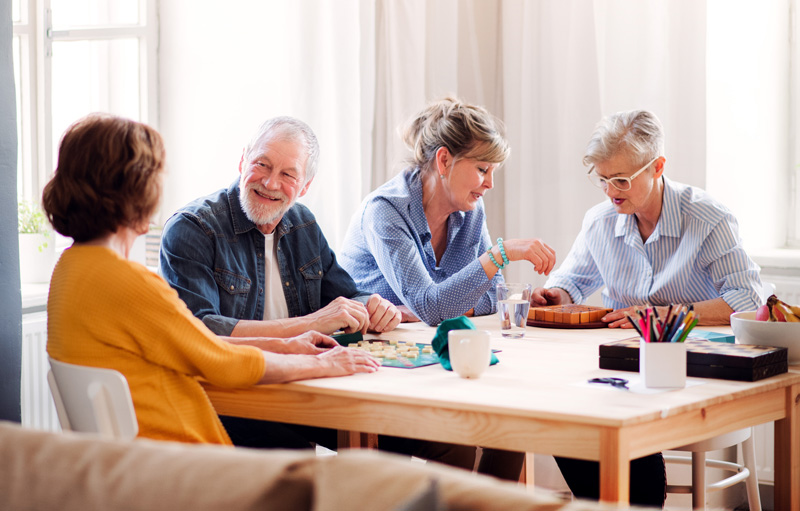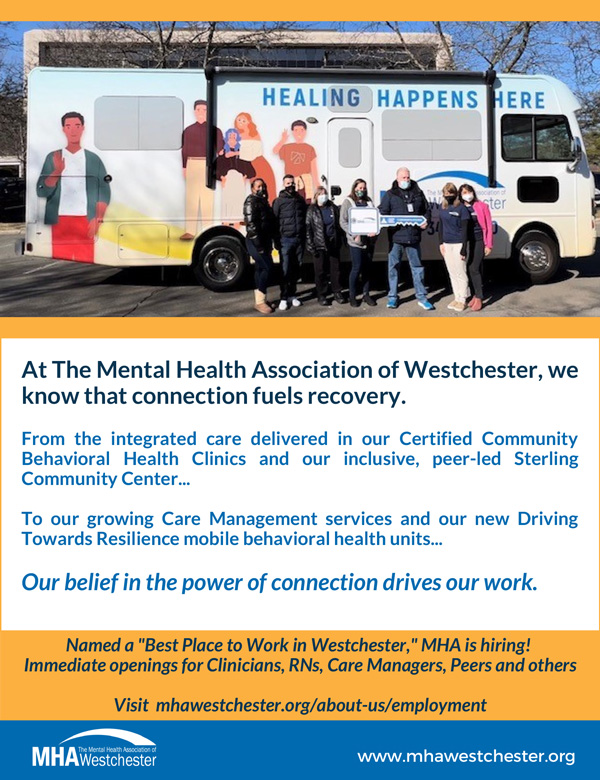Humans are social beings by nature. While our level of socialization differs from person to person, the great majority of people have emotional and psychological needs that are best met by interpersonal engagement. In a healthcare system defined and often enhanced by outcome measures, evidence-based practices, and centered around a combination of hospitals and professionally run clinics, it’s easy to miss the significance of the “unglamorous” community center. Unglamorous both because of the images too often evoked from the past, in which individuals who were frequently over-medicated spent the day smoking cigarettes and sitting around, as well as due to a strong preference for the inherent predictability of the clinic and its psycho-therapy groups. By comparison to a traditional clinic, the community center’s seemingly inefficient use of time, focus on connection and recreation, and almost chaotic energy can seem dated. However, underlying the community center model is a concept so basic, it underpins our society – the inherent human need for community and connection. While the calm, professional clinical environment can provide effective treatment, the humble community center remains an extremely effective vehicle for forging community and social connection upon which a robust recovery journey can develop.

In his book Together: The Healing Power of Human Connection in a Sometimes Lonely World, former surgeon general Dr. Vivek H. Murphy writes, “Medicine for my parents was all about relationships… built by listening. Insurance companies would protest their spending more than the approved fifteen minutes… but [they] understood that to truly listen… you had to meet people where they are…. however long it takes.” Community centers remain an ideal space to allow supportive staff to meet people where they are, provide healing support, and facilitate the development of connection and community, however long it takes. Too often, connection is seen as a consequence of proper treatment, rather than a precondition to recovery. Dr. Murphy writes, “It’s clear that loneliness serves a vital function by warning us when something essential for our survival – social connection – is lacking.” People do not become more connected by “recovering,” they begin their recovery, in part, as a result of building (or rebuilding) connections. In traditional psychotherapy, this connection comes in the form of therapeutic relationship, whereas in a community center, it takes the form of traditional friendships. While both relationships have value, it is those natural supports, such as friendships, that best promote resilient recovery.
The Mental Health Association of Westchester’s (MHA) Sterling Community Center (SCC), located at 29 Sterling Avenue in White Plains, New York, is far more of an idea than a structure; it’s a place where people are welcome, regardless of where they are in their own recovery. For a community center to fulfill its promise, it must open its doors to the same people who society too often neglects. This means being open to behaviors that might be outside the norm and addressing community issues through an empathetic and situational lens rather than relying on the safety of established rules and consequences. The community center is a model of acceptance, equality, and inclusion, even when exclusion might be an easy solution to common challenges. People frequently come to SCC after being rejected while trying to form connections and seeking to remain part of a community in traditional social settings. At SCC, the experience of belonging and connection offers a healing invitation. Our Community Center becomes a unique space at which folks can struggle, make mistakes, and learn without risk of exclusion. Many gain a level of social connection from daily employment, but if their behavior ventures outside of the established social standard, they might rapidly find themselves without a valued role and connection.
Unless there are active and acute safety concerns, any person 18 years of age or older with a behavioral health diagnosis is welcome to join SCC. To ensure community mental health is effective and inclusive, there must be a level of support with generally open doors, which is accessible to those with limited information and potentially no existing resources. SCC fills this need: it can be the first place an overwhelmed individual with a new diagnosis walks into; it can be the connection to other needed services; and it can remain as constant as the individual who works through various levels of support. In contrast to traditional clinic, SCC relies on grants and is able to open its doors to individuals regardless of their insurance type or status. Frequently, folks require assistance navigating complex social benefits system, but they also often require benefits (such as insurance) before receiving assistance. SCC does not require insurance and welcomes anyone who walks in, at any stage of their lives. Ensuring each person receives treatment at the appropriate level of support is important to providing quality services. Transitioning between “various levels of care” can make it difficult to form long-term friendships and ties – elements that have been identified as key components of successful recovery. Through each phase and level, SCC remains an integral component of the treatment and support paradigm, in whatever capacity the person chooses.
Early in a recovery journey, one may attend daily groups and activities at SCC, utilizing the hours and days between psycho-therapy sessions and groups. During this time, they might be using SCC as a safe space to test out concepts discussed in therapy and finding mutual support in the environment. As one progresses, the amount of time spent at SCC, as well as how that time is spent, also evolves. SCC can become a source of support in a job search, with available technologies such as computers, Wi-Fi, and peer supporters to build needed skills. Even when someone has advanced in their recovery, they may find a place at SCC as a participant volunteer, group facilitator, or just a social drop-in. This space can also serve as a sanctuary for those seeking time and space to reflect in a calm and welcoming environment with connection to additional resources, if needed. It is up to the person, rather than the staff, when and how they choose to utilize the SCC space.
The question isn’t which is more effective, the clinic or the community center, but how they may collaborate to build a comprehensive and effective support system. A number of clinic offices share space with SCC, giving participants access to both professional care and SCC’s open, relationship-building social setting. This approach considers the whole individual, addressing both immediate and long-term goals for connections, relationships, and natural supports. The outcomes are unique and significant; SCC has seen generations of individuals walk through its doors and has provided a space for lifelong connections to blossom. The Sterling Community Center has witnessed the formation of numerous lifetime friendships and at least one marriage, as well as the development of many participants’ careers, families, children, grandchildren, hobbies, and passions. These long-term, natural ties are what make the community center model so special and beneficial to the recovery process.
Ruthanne Becker, MA, is the Senior Vice-President of Rehabilitation Services, Dillon Bowne, LMSW, is the Coordinator of Peer and Recovery Services, and Jordania Estrella, LCSW-R, is the Chief Clinical Officer at Sterling Community Center.





